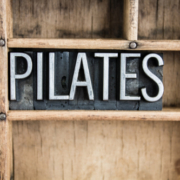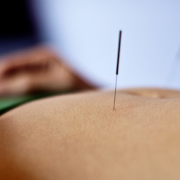What Chiropractic Patients Want To Know About Pilates
Everyone knows that exercise is great for overall wellness, better health, and a strong body. Many chiropractors will often recommend regular exercise to their patients who need to lose weight, want better mobility, or are seeking relief from depression. A number of chiropractors are turning to Pilates to help their patients get stronger, more flexible, and more mobile.
What is Pilates?
In the early 20th century Joseph Pilates developed the exercise program to help World War I soldiers improve their physical fitness. It was used to rehabilitate patients who had been injured. By incorporating resistance, stretching, and target strengthening exercise, Pilates uses resistance bands, special machines, and floor work to reshape and rehabilitate the body. Dancers, gymnasts, athletes, and celebrities use Pilates to stay in shape. However, anyone can do it for a healthier, more supple spine.
Care of the spine is at the core of Pilates. By keeping it in a neutral, or natural, position, this exercise can prevent back pain as well as help ease it. When done correctly, Pilates can:
- Improve muscle control and movement efficiency through mental focus.
- Make you more mindful of your body’s position, specifically, remaining aware of the spine’s position and keeping it neutral
- Improve centering and mental focus through special, breathing techniques
- Support and improve posture by strengthening abdominal and back muscles.
Benefits of Pilates for Chiropractic Patients
The benefits of Pilates tremendous, but for chiropractic patients it is even more so. By regularly incorporating Pilates into your exercise routine, you can enjoy these incredible benefits.
You can adapt Pilates to your fitness level and needs. Whether you are just starting a fitness program or you’ve been working out for years, Pilates can be adapted to your fitness needs and level.
It helps you strengthen your core. The deep muscles of your abdomen, back, and pelvic floor make up the core muscles of your body. Many of the Pilates movements focus on these muscles, making a body that is strong and the frame is supported.
Allows you to strengthen your muscles without bulking up. With Pilates your muscles get strong, but it also stretches the muscles so that they are lean and long. You will look toned and tight but not bulky and muscular.
It focuses on whole body fitness. Many types of exercise only work certain parts of the body, but Pilates focuses on whole body fitness. It works every part of the body so that the muscle development is balanced.
It helps to improve your posture. Pilates strengthens your body and helps to keep your spine in proper alignment due to a strong core. As a result, your posture naturally improves. By incorporating it into your exercise routine, you will find yourself standing taller, stronger, and more graceful.
You can become more connected through your mind and body by increased awareness. Pilates engages your mind and increases body awareness. It unites mind, body, and spirit for complete coordination. Each movement is done with complete attention.
It improves your flexibility. Pilates is a gentle but powerful exercise that works to safely stretch the muscles, making them longer, and increasing the range of motion in the joints.
It can protect you from injuries. By strengthening your body, Pilates can help protect you against injury. It conditions your whole body so that your muscles and strength are balanced. This reduces your risk of injury.
You get a natural energy boost. Just like with any exercise, Pilates will give you an energy boost. However, it is increased even more thanks to the focused breathing and increase in circulation stimulating the muscles and spine.
It can help you lose weight and attain a lean, long, strong body. Pilates tones and strengthens the body and if you do it regularly it will reshape you. The body is leaner and more balanced. It also helps you move with more grace and ease.
Give us a call at (780)455-2112 to book your one on one session with our amazing instructor! Visit www.ocwc.ca to learn more about our wellness clinic.



